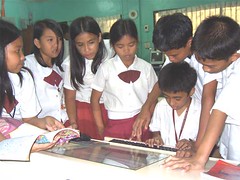
MySpace, the site that most Western teenagers use every day, but also love to hate. It has so many problems and issues, but nonetheless continues to grow in popularity. Perhaps there are some lessons we can learn for education technology projects.
1) Users can tolerate bugs: Myspace is bug-ridden. This morning I had to log in 10 times to subscribe to a friend's blog. But people still go there every day..
2) All that matters is the people: Most users only stay on MySpace because their friends and useful contacts are there.
3) Safety is not assured: although still affecting a relatively small number, safety concerns are high (as anyone can register, and say they are any age). So adults can send unsuitable content to children.
4) Privacy worries: teens are posting unsuitable content, without thinking about the consequences. There's clearly need for more media literacy education here.
5) Usability isn't such a big deal: the MySpace interface is very inefficient and requires far too much clicking to do some simple tasks. But they still go back...
6) Corporate ownership doesn't worry them: teens are uploading creative work to the MySpace platform without any concerns about ownership.
US researcher Danah Boyd has written a great deal about MySpace and similar social networks. Also my previous post on digital teenagers has some discussion of similar issues, and a link to an audio file which includes teens talking about MySpace.





